#Black History of Florida
Text
youtube
When the Seminole Indians Aligned With Escaped Slaves
The Black Seminoles were a group of people that history, for the most part, forgot about. Their alliance with the native Seminole tribes resulted in a unique relationship that had never been seen before, and that changed the course of history for both the Seminoles and the State of Florida as a whole.
The Black Seminoles, sometimes called Maroons, were a group of freed men and runaway slaves living in Florida during the mid-16th century. They settled the first free Black town in American history, attained their freedom by joining the Spanish and converting to Catholicism, and formed a tight cultural bond with the Seminole tribes.
#When the Seminole Indians Aligned With Escaped Slaves#Freedmen#florida#Seminoles#Black Indians#Black History Matters#Black History of Florida#Black History Month 2024#bhm24#2024#Youtube
6 notes
·
View notes
Text
The "Negro Fort" massacre | libcom.org
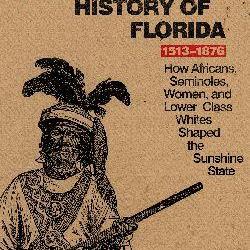
This article is an excerpt of Wasserman's A People's History of Florida.
The Patriots War, the War of 1812, the Creek War, and the Seminole War were all closely interrelated conflicts, revolving around Indian Removal and slavery. The fighting in the U.S. Southeast during the second decade of the 19th century defined Manifest Destiny, which was underlined by a disposition to expand slavery and white supremacy. Manifest Destiny was the self-declared right of the United States to violate national sovereignty to eliminate any perceived threat of an encroaching foreign colonial power in its vicinity. This policy also intended to seize Spanish colonial possessions and annex them in order so the South could procure additional slave states. Indian Removal and slavery were combined with Manifest Destiny in the war of 1812 as British agents utilized disaffected native tribes and fugitive slaves to form a Southern front against the United States.
The wars in the Southeastern United States were all characterized by the same predisposition of U.S. expansionism – which itself was characterized by attempts to expand and protect slavery. The reigning U.S. doctrines of the early 19th century came about in opposition to the threat that slave and native sanctuaries like Florida posed to the Southern states. As the policies of Indian Removal and Manifest Destiny became more defined in the Southern theater of war, the free black and native settlements found themselves in a constant conflict with the slave-raiding, land-grabbing white settlers of Georgia.
After their defeat at Horseshoe Bend in the Creek War, the Red Stick Creeks fled into Florida to avoid Jackson’s draconian terms of surrender. Jackson’s military intervention in Florida partially focused on further destroying the anti-white Red Sticks Creeks that were incorporated into the Seminole and black settlements. As with the fugitive blacks, they grew to hold considerable power in the Seminole tribe, eventually enveloping the old chiefs.
In the war of 1812, the British used Florida as their base of operations to create a Southern front against the U.S. military. Florida was a diversion from the war in a North. British agents promised thousands of natives and fugitive blacks land, freedom, and protection as long as they fought on the British side in the war. The Seminoles, Miccosukees, Red Stick Creeks, and blacks established closer ties in these frontier operations, with the further understanding that they all shared a mutual interest to fend off the encroaching white settlers.
In 1814, British military official Col. Nichols ordered his Red Stick Creek allies to construct a fort on the Appalachicola River. The British retreated from their position at Pensacola after Andrew Jackson’s invasion. They were joined by their Red Stick Creek allies and several hundred slaves belonging to the residents of that town. 1 Nichols furnished the fort with artillery and munitions. The fort was located fifteen miles above the mouth of the river, manned with three hundred British soldiers and an immediate flow of refugee Seminoles and runaway slaves from Southern states who sought the protection of the British military and arms to defend their lands from white settlers. 2 The purpose of the fort was to assemble an army of disaffected indigenous people and runaway slaves to attack the white settlements on the southern Georgia/Alabama borders. By December 1814, over 1,400 warriors gathered at the fort – a coalition of refugee Red Stick Creeks, Seminoles, blacks, and numerous tribes indigenous to Florida. 3 General Gaines estimated 900 warriors and 450 armed blacks inhabited the fort. 4 The runaway slaves were given the opportunity to either leave for the British colonies to receive land as free settlers or fight under the British military. 5 By the early summer of 1815, Nichols left the Appalachicola for England accompanied by a handful of Red Stick Creek chiefs. He intended on making their cause known to the British Crown in hopes for protection against the Americans. The Red Stick Creeks and Seminole warriors who remained behind abandoned the fort soon afterwards. 6
Before Nichols had even left, the blacks had already taken possession of the fort. An additional 300 to 400 runaways were estimated to have fled to the fort for protection. 7
A letter from General Gaines on May 14th declared: “Certain Negroes and outlaws have taken possession of a Fort on the Appalachicola River in the territory of Florida.” 8
The Seminoles “were kept in awe” at the hundreds of armed blacks in the vicinity. “For a period,” William H. Simmons claimed, the Seminoles “were placed in the worst of all political conditions, being under a dulocracy or government of slaves.” 9
Nichols left behind a large supply of arms, artillery, and ammunition to protect the inhabitants from slave raiders and to commission raids on Southern plantations. They were supplied with 2,500 stands of musketry, 500 carbines, 500 steel scabbard swords, four cases containing 200 pistols, 300 quarter casks of rifle powder, 162 barrels of cannon powder, and a large count of military stores. On the walls of the fort were mounted four long twenty-four pounder cannon, four long six-pounder cannon, a four-pound field pierce, and a five and a half inch howitzer. 10
The fort grew from a strategically defensive base to a flourishing free black community around the banks of the Appalachicola. The blacks cultivated fields and plantations extending fifty miles up the river. Many of the black Seminoles were descendents of West Africans. They inherited generations of knowledge of African agricultural techniques. The community surrounding the fort was attractive for its defensible position and cultivatable lands. Runaway slaves were pouring in on a daily basis. The community grew to about 1,000 blacks in the fields surrounding the fort. 11
A total 300 black men, women, and children were in possession of the fort, accompanied by about twenty Choctaws and a number of Seminoles. 12
Joshua Giddings vividly depicted the “Negro Fort”:

“Their plantations extended along the river several miles, above and below the fort. Many of them possessed large herds of cattle and horses, which roamed in the forests, gathering their food, both in summer and winter, without expense or trouble to their owners. The Pioneer Exiles from South Carolina had settled here long before the Colony of Georgia existed. Several generations had lived to manhood and died in those forest-homes. To their descendants it had become consecrated by “many an oft told tale” of early adventure, of hardship and suffering; the recollection of which had been retained in tradition, told in story, and sung in their rude lays. Here were graves of their ancestors, around whose memories were clustered the fondest recollections of the human mind. The climate was genial. They were surrounded by extensive forests, and far removed from the habitations of those enemies of freedom who sought to enslave them; and they regarded themselves as secure in the enjoyment of liberty. Shutout from the cares and strifes of civilized men, they were happy in their own social solitude. So far from seeking to injure the people of the United States, they were only anxious to be exempt, and entirely free from all contact with our population or government; while they faithfully maintained their allegiance to the Spanish crown.” 13
Colonel Patterson wrote about the Appalachicola Fort:
“The force of the negroes was daily increasing; and they felt themselves so strong and secure that they had commenced several plantations on the fertile banks of the Appalachicola, which would have yielded them every article of sustenance, and which would, consequently, in a short time have rendered their establishment quite formidable and highly injurious to the neighboring States.” 14
The fort was becoming a growing threat to slavery itself. The existence of an autonomous free black community was intolerable alone, but it became a rallying point for runaway slaves fleeing from other Southern states. The blacks were less concerned about “committing depredations” as was depicted by U.S. military officials than they were about protecting their freedom.
As Giddings described, they were “happy in their own social solitude,” finally free and safe after decades of harassment and terror. They had the means for sufficient provisions with no reason to attack the frontier settlers. As much as the expansionists wished to depict them as outlaws they could not attribute them to even one instance of murder or theft. The crime they were guilty for was to “inveigle negroes from the citizens of Georgia, as well as from the Creek and Cherokee nations of Indians.” 15
Col. Patterson commended its elimination:“The service rendered by the destruction of the fort, and the band of negroes who held it, and the country in its vicinity, is of great and manifest importance to the United States, and particularly those States bordering on the Creek nation, as it had become the general rendezvous for runaway slaves and disaffected Indians; and asylum where they were assured of being received; a stronghold where they found arms and ammunition to protect themselves against their owners and the Government.” 16
As the blacks peacefully flourished in their isolated community on the Appalachicola, military officials and slaveholders planned its destruction. On May 21, a British “gentleman of respectability” from Bermuda wrote a memorandum disapproving Col Nichols for having “espoused the cause of the slaves.” He wrote of the “Negro Fort”: “No time ought to be lost in recommending the adoption of speedy, energetic measures for the destruction of a thing held so likely to become dangerous to the state of Georgia.” 17
On March 15, 1816 the Secretary of War ordered General Andrew Jackson to call attention to the governor of Pensacola to the fort. If the Spanish governor refused to “put an end to an evil of so serious nature,” the U.S. government would promptly take measures to reduce it. If the Spanish government was too weak to destroy it, then the U.S. was more than willing to take it into its own hands.
On April 23, Jackson transmitted the demands of Secretary Crawford, ordering the Spanish governor to “destroy or remove from out frontier this banditti, put an end to an evil of so serious a nature, and return to our citizens and friendly Indians inhabiting our territory those negroes now in said fort, and which have been stolen and enticed from them.”
The blacks at the Appalachicola Fort were supposedly “enticed from the service of their masters.” 18
Of course the runaways couldn’t have possibly been dissatisfied with a life of servitude. Jackson knew that the slaves were not actually stolen away.
They were runaways from slaveholders who sought refuge at the fort with the promise of abundance and freedom under the protection of the free blacks. Most of the black warriors and families had been free for generations.
Their ancestors had fled from their masters to Spanish Florida many decades before. Plus Jackson’s request to the Spanish governor only gave a façade of legitimacy to the inevitable designs of the U.S. government. On April 8, two weeks before Jackson wrote the Spanish governor, he ordered General Gaines to destroy the “Negro Fort” regardless of its location on Spanish territory:
“I have little doubt of the fact, that this fort has been established by some villains for rapine and plunder, and that it ought to be blown up, regardless of the land on which it stands; and if your mind shall have formed the same conclusion, destroy it and return the stolen Negroes and property to their rightful owners.” 19
General Gaines carefully prepared for the operation. He himself believed that the fort would “produce much evil among the blacks of Georgia, and the eastern part of the Mississippi territory.” 20
Obviously this terrible evil meant to leave their lifetime of bondage for a state of freedom. Lt. Col. Duncan Lamont Clinch was assigned to destroy the fort. Clinch had his own interests when it came to the fort, being among the most prosperous slaveholders of Florida. He undoubtedly felt that his profit interests were threatened by its continued existence. Gaines ordered him to speedily establish a fort near the junction of the Flint and Chattahoochee rivers, where they joined to form the Appalachicola, to intimidate the “Negro Fort.”
Clinch was to meet the convoy of supplies from New Orleans with fifty soldiers once he was informed that they had arrived at the river. The convoy was detached with two gunboats. From that point, Gaines ordered him to proceed to the “Negro Fort” where if he was to “meet with opposition” then “arrangements will immediately be made for its destruction.” Gaines wished to provoke an attack to justify the destruction of the fort. For this purpose, Clinch was supplied with two eighteen-pound cannons and one howitzer. 21
On July 10, the supply convoy reached the mouth of the Appalachicola where they received a dispatch from Col. Clinch ordering them to hold their position until he could arrive with troops to escort them up the river. On July 17, a party of five men from the supply vessels was sent to gather fresh water.
Once the party entered the river, they discovered a black man on the shore, near one of the plantations along the Appalachicola. As soon as they touched down on the shore, about forty blacks and Seminoles fired a volley of shots from their hidden position in the bushes. The black man on the beach served as a decoy to lure the small party into the ambush. Three of the men were immediately killed, one dove into the water and made it back to the convoy, and the other was captured. 22
On that same day, Col. Clinch commenced to the “Negro Fort.” He left with about 116 soldiers and incidentally met a party of slave-hunting Creeks led by Chief McIntosh. The Coweta Creeks numbered about 150. They had been hired by General Jackson to capture slaves in the Appalachicola - offered fifty dollars for every slave they seized and returned to their owner.
A council was held where the Creeks agreed to keep parties in advance and capture every black that they discovered. On the 19th, they caught a black Seminole in the vicinity heading to the Seminole chiefs with the scalp of one of the members of the party they ambushed. The blacks were attempting to garner the assistance of their Seminole allies.
The prisoner communicated the story of the ambush. On the 20th, Clinch proceeded with the Creek force over to the fort and came within gunshot range. It was impossible to destroy the fort without artillery.
They were forced to wait until the gunboats from the supply vessel arrived. McIntosh was ordered to surround the fort with a third of his force and maintain an irregular fire. The blacks fired artillery back but to no avail. On the 23rd, the Creeks demanded that the blacks surrender but they responded defiantly. The black commander Garcon told the deputation of Creeks “he would sink any American vessels that should attempt to pass it; and he would blow up the fort if he could not defend it.” 23
The blacks then hoisted the English Union Jack accompanied with the red flag over the fort. The blacks knew that surrender would only mean slavery so they would be no compromise. For the next several days the blacks opened fire whenever any troops appeared in their view.
On July 27, the gunboats approached the fort. The blacks opened fire when they entered into gunshot range. The gunboats fired back with some cold shots to get an idea of their real distance. The gunboats then fired “the first hot one,” made red-hot in the cook’s galley, which went screaming over the wall and into the fort’s magazine full of gunpowder. The fort completely exploded. Col. Clinch reported the horrific destruction:
“The explosion was awful, and the scene horrible beyond description. Our first care, on arriving at the scene of the destruction, was to rescue and relieve the unfortunate beings who survived the explosion. The war yells of the Indians, the cries and lamentations of the wounded, compelled the soldier to pause in the midst of victory, to drop a tear for the sufferings of his fellow beings, and to acknowledge that the great Ruler of the Universe must have used us as his instruments in chastising the blood-thirsty and murderous wretches that defended the fort.” 24
He gave a “divine justification” for the massacre in the official report. But he also wrote a far more descriptive alternative account of the event without involving God:
"The explosion was awful, and the scene horrible beyond description. You cannot conceive, nor I describe the horrors of the scene. In an instant lifeless bodies were stretched upon the plain, buried in sand and rubbish, or suspended from the tops of the surrounding pines. Here lay an innocent babe, there a helpless mother; on the one side a sturdy warrior, on the other a bleeding squaw. Piles of bodies, large heaps of sand, broken guns, accoutrements, etc, covered the site of the fort. The brave soldier was disarmed of his resentment and checked his victorious career, to drop a tear on the distressing scene." 25
The terrible explosion instantly killed 270 black men, women, and children within the fort, the rest being mortally wounded out of the total 330 residents. Only a few survived. The black commander Garson and the Choctaw chief somehow managed to survive the explosion. The Creeks sentenced them to death for the murder of the four U.S. soldiers. They learned that the blacks had tarred and feathered the captured soldier.
The Creeks immediately executed them afterwards. Some six of the blacks were captured and immediately returned to their speculated masters - that is if they were ever held in bondage at all. The large number of runaway slaves on the fields that surrounded the river scattered about to safety. Some fled to the protection of the blacks and Seminoles at the Suwannee and others left to the growing free black community just south of Tampa Bay.
The elimination of the fort was not the end of the black Seminole social structure in Florida. Several other black communities remained largely intact. But it was far from the end of the terror inflicted on the black Seminoles by the Federal government. It was far from the end of their resistance either. They would strive to avenge the loss of their family members and loved ones. 26
#Negro Fort#Seminoles#Creeks#Miccosukees#Black Enslaved#spanish#suwannee#appalachacola#florida#Black history of florida#freedmen#ft gadsden
3 notes
·
View notes
Text

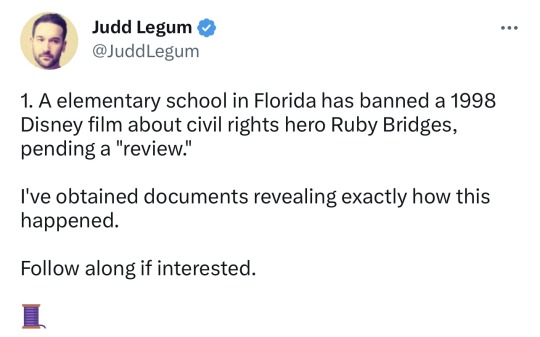
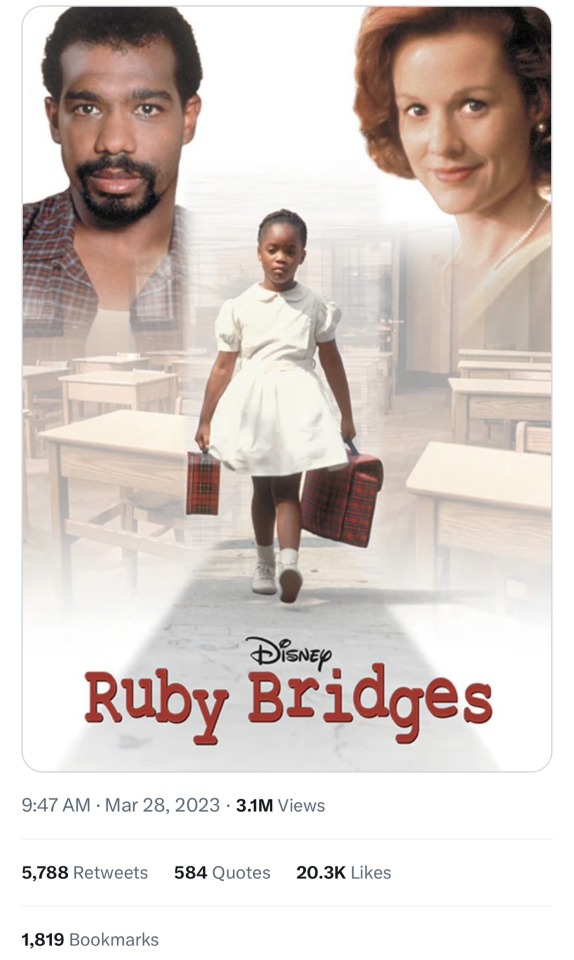
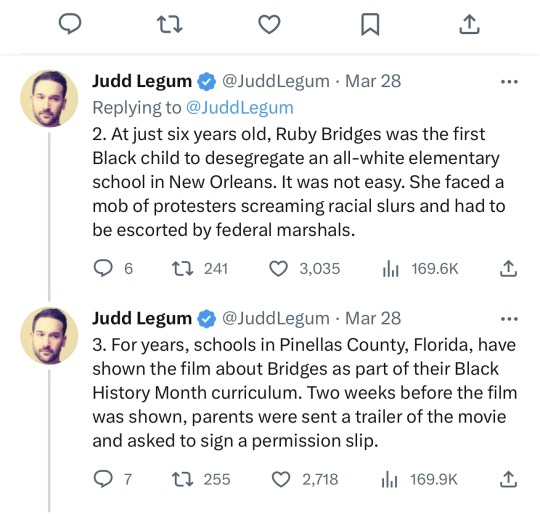


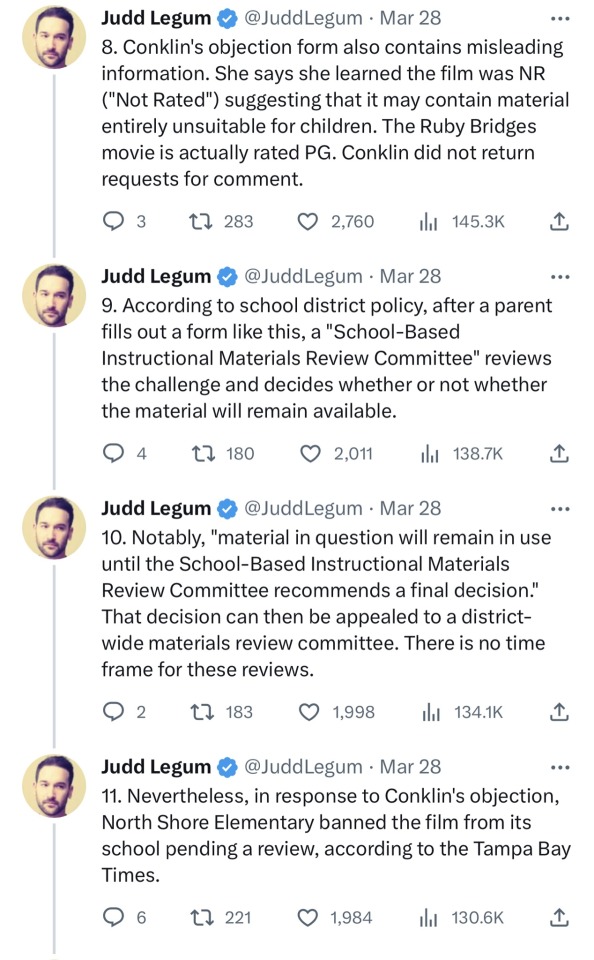
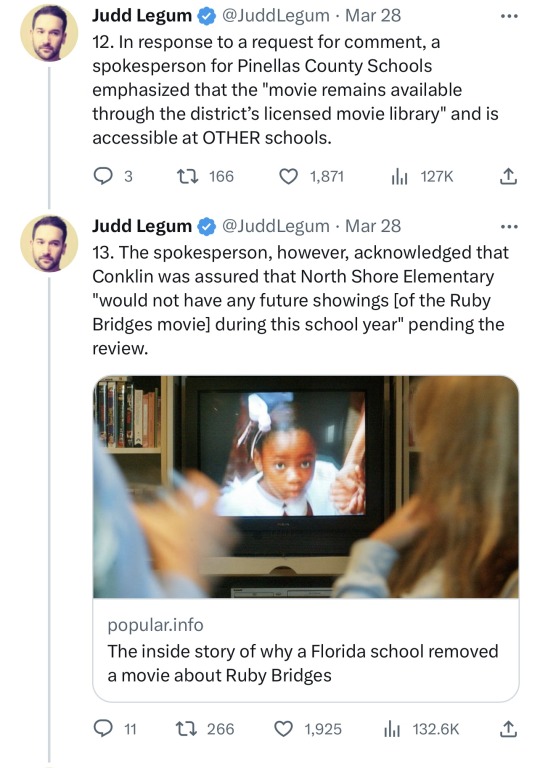


This is recent history. Ruby Bridges is 68yrs old and she is still alive.
Emily Conklin is thee definition of a racist Karen, and she is trying to whitewash the history white children learn by erasing a rated PG Disney movie that has already been shown for years in Pinellas County schools, usually as a part of Black History Month.
Two immediate thoughts that come to mind are:
“The people who threw rocks at Ruby Bridges for trying to go to school in 1960 now are upset their grandchildren might learn about them throwing rocks at Ruby Bridges for trying to go to school.”
and
“IF BLACK CHILDREN ARE OLD ENOUGH TO EXPERIENCE RACISM, WHITE CHILDREN ARE OLD ENOUGH TO LEARN ABOUT IT”
Look, Ruby Bridges was six years old when racist white parents (men and women) threw rocks and hissy fits because she was trying to get an education. A full year younger than most of the white children who are now being “protected” from learning the truth about what their grandparents did.
I guess these delicate snowflakes are so triggered by the racism of their elders that they need to get the Republican governor to whitewash away the truth.
I’m almost 40yrs old and I used to wonder how it was that in college, white kids my age genuinely believed that Martin Luther King, Jr. died of old age. But somehow, every single Black person my age knew the truth. How does that happen?? This is how it happens. This is a prime example of precisely how that happened and still happens—because to “protect” them from the truth, white kids weren’t taught that he was assassinated. It’s literally no different than raising generations of white kids to believe that 2+2=5. There’s going to be serious problems when they hit the real world. But what can I say? Conservatives like ‘em dumb and ignorant.
Anyway, this is how you get generations of fully grown white adults who truly honestly believe foolishness like “racism is over,” or “Martin Luther King basically ended racism,” or, “we don’t need affirmative action because there is no more racism; if anything it’s white people who are more discriminated against now.” (The majority of white people polled said the same thing in the 1960s too, btw).
Keeping as many white people as possible ignorant of the truth does not happen by accident. It’s very intentional. And that’s not to say that ALL white people are ignorant of the truth. Some of them, like Emily Conklin, know the truth, but just do not care.
And make no mistake: The same white people who want to keep their white children “pure” and “innocent” have ZERO problems criminalizing and sending young Black children directly to jail for even the slightest misbehavior in a classroom.
Evil, racist cowards (redundant, I know).
#politics#emily conklin#republicans#ruby bridges#whitewashing history#erasure#north shore elementary school#black history#crt#critical race theory#book banning#florida#floriduh#ron desantis
2K notes
·
View notes
Text

#ron desantis#lbgqt#sports#florida#black lives matter#blm#woc#poc#feminism#black history#gop#republicans
1K notes
·
View notes
Text

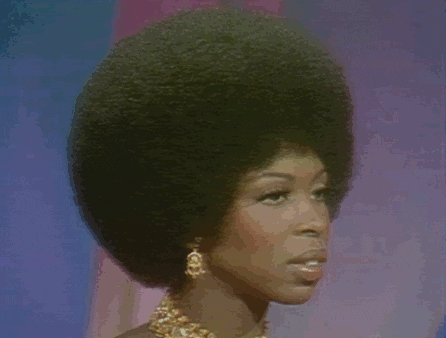
#happy bhm#black history month#“i just find it hard to believe that.....”#Ikr? I do too.#shit was wild#that's why they don't teach it in Florida anymore#because the truth is fucked up#lmfao
56 notes
·
View notes
Text
Worried by Florida’s history standards? Check out its new dictionary!

As always, Alexandra Petri is spot on in satirizing the right-wing censorship and educational nonsense happening in Florida. This is a gift 🎁 link, so you can read the entire column, even if you don't subscribe to The Washington Post.
Below are some excerpts 😂:
Well, it’s a week with a Thursday in it, and Florida is, once again, revising its educational standards in alarming ways. Not content with removing books from shelves, or demanding that the College Board water down its AP African American studies curriculum, the state’s newest history standards include lessons suggesting that enslaved people “developed skills” for “personal benefit.” This trend appears likely to continue. What follows is a preview of the latest edition of the dictionary to be approved in Florida.
Aah: (exclamation) Normal thing to say when you enter the water at the beach, which is over 100 degrees.
Abolitionists: (noun) Some people in the 19th century who were inexplicably upset about a wonderful free surprise job training program. Today they want to end prisons for equally unclear reasons.
Abortion: (noun) Something that male state legislators (the foremost experts on this subject) believe no one ever wants under any circumstances, probably; decision that people beg the state to make for them and about which doctors beg for as little involvement as possible.
American history: (noun) A branch of learning that concerns a ceaseless parade of triumphs and contains nothing to feel bad about.
Barbie: (noun) Feminist demon enemy of the state.
Biden, Joe: (figure) Illegitimate president.
Black history: (entry not found)
Blacksmith: (noun) A great job and one that enslaved people might have had. Example sentence from Florida Gov. Ron DeSantis (R): “They’re probably going to show that some of the folks that eventually parlayed, you know, being a blacksmith into doing things later in life.”
Book ban: (noun) Effective way of making sure people never have certain sorts of ideas.
Censorship: (noun) When other people get mad about something you’ve said. Not to be confused with when you remove books from libraries or the state tells colleges what can and can’t be said in classrooms (both fine).
Child: (noun) Useful laborer with tiny hands; alternatively, someone whose reading cannot be censored enough.
[...]
[See more select "definitions" below the cut]
Classified: (adjective) The government’s way of saying a paper is especially interesting and you ought to have it in your house.
Climate change: (noun) Conspiracy by scientists to change all the thermometers, fill the air with smoke and then blame us.
[...]
Constitution: (noun) A document that can be interpreted only by Trump-appointed and/or Federalist Society judges. If the Constitution appears to prohibit something that you want to do, take the judge on a boat and try again.
[...]
DeSantis, Ron: (figure) Governor who represents the ideal human being. Pronunciation varies.
Disney: (noun) A corporation, but not the good kind.
[...]
Election: (noun) Binding if Republicans win; otherwise, needs help from election officials who will figure out where the fraud was that prevented the election from reflecting the will of the people (that Republicans win).
[...]
Emancipation Proclamation: (noun) Classic example of government overreach.
Firearm: (noun) Wonderful, beautiful object that every person ought to have six of, except Hunter Biden.
[...]
FOX: News.
Free speech: (noun) When you shut up and I talk.
Gun violence: (noun) Simple, unalterable fact of life, like death but unlike taxes.
[...]
Jan. 6: (noun) A day when some beautiful, beloved people took a nice, uneventful tour of the U.S. Capitol.
King Jr., Martin Luther: (figure) A man who, as far as we can discern, uttered only one famous quotation ever and it was about how actually anytime you tried to suggest that people were being treated differently based on skin color you were the real racist. Sample sentence: “Dr. King would be enraged at the existence of Black History Month.”
Liberty: (noun) My freedom to choose what you can read (see Moms for Liberty).
Moms for Liberty: (noun) Censors, but the good kind.
[...]
Pregnant (adjective): The state of being a vessel containing a Future Citizen; do not say “pregnant person”; no one who is a real person can get pregnant.
Queer: (entry not found)
Refugee: (noun) Someone who should have stayed put and waited for help to come.
Slavery: (noun) We didn’t invent it, or it wasn’t that bad, or it was a free job training program.
Supreme Court: (noun) Wonderful group of mostly men without whom no journey by private plane or yacht is complete.
Trans: (entry not found)
United States: (noun) Perfect place, no notes.
[emphasis added to defined words]
#florida#ron desantis#black history#educational standards#alexandra petri#satire#the washington post#gift link
150 notes
·
View notes
Text
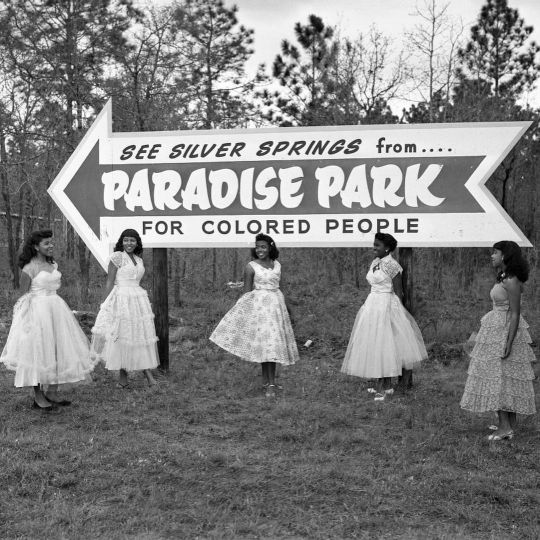


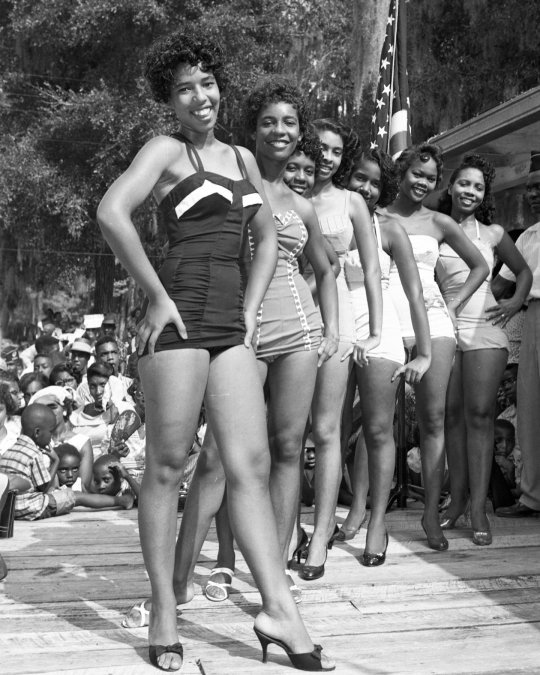
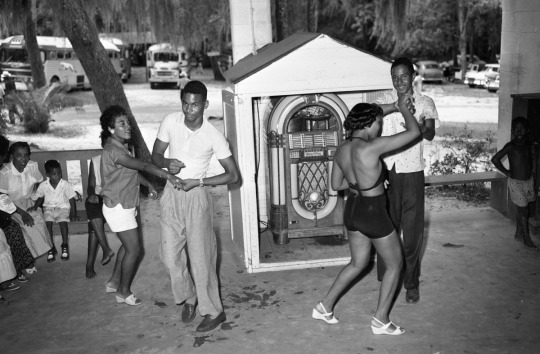

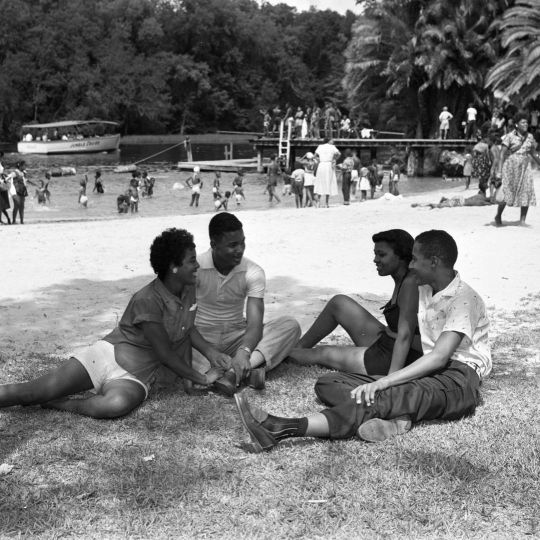
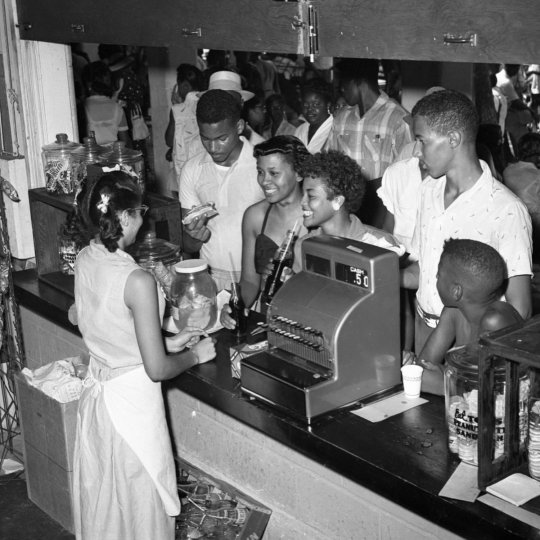
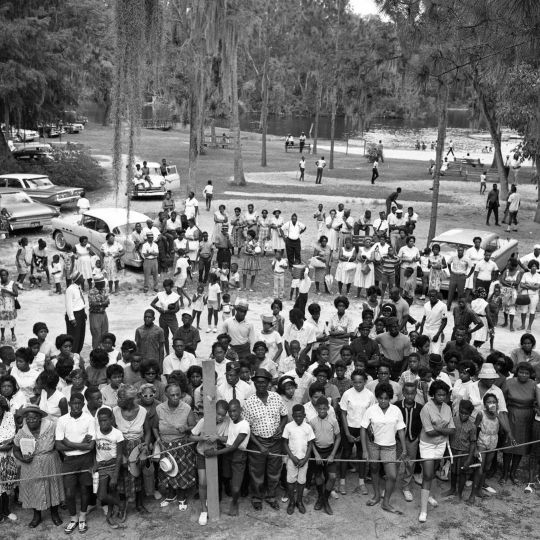
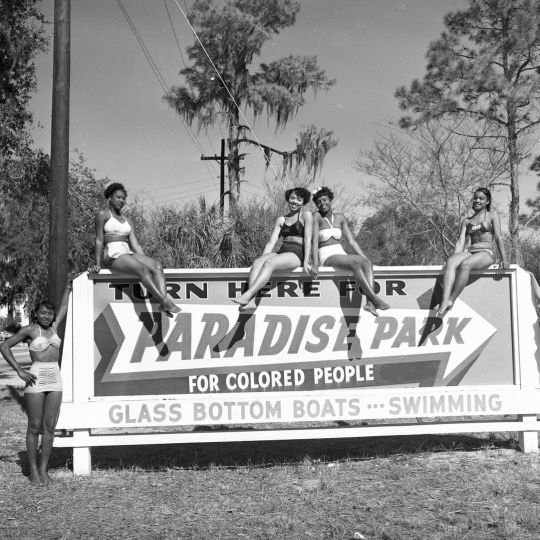
Paradise Park, Silver Springs, Florida, 1957 🖤🖤🖤🖤🖤
Paradise Park was a tourist attraction & the only local recreational facility "for colored people".
📸: Bruce Mozert
#Paradise Park#silver springs#florida#black women#black men#1950s style#1950s fashion#1950s women#1950s photography#1950s history#1950s vintage#1950s#50s style#50s fashion#50s pinup#50s photography#50s vintage#50s#decade: 1950s#vintage style#vintage fashion#vintage black women#vintage black glamour#black women beauty#black women magic#black girl beauty#black girl magic#black folks#black people#african american
27 notes
·
View notes
Text
In case you missed it: Florida is requiring schools to teach slavery taught "skills that personally benefit Black people".
This video shows just how ridiculous that notion is.
Original link: https://www.tiktok.com/t/ZT8LPm9Tx/
108 notes
·
View notes
Text
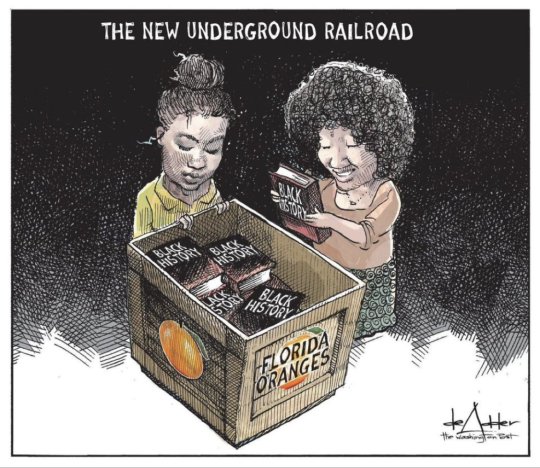
#BlackHistoryMonth ✊🏿✊🏽✊🏿#Black history#us history#black history month#civil rights#civil rights movement#black history 365#black history continued 2021#black history matters#black lives matter#black history 2022#Black history month#black lives fucking matter#black lives movement#ron deathsantis#gov. ron desantis#ron desatanist#ron desanctimonious#ron desantis#florida governor ron desantis
368 notes
·
View notes
Text


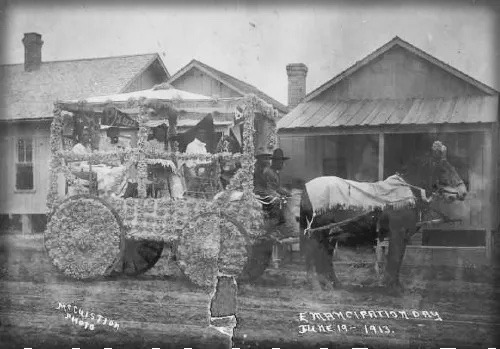
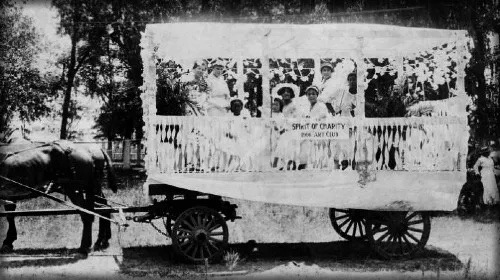

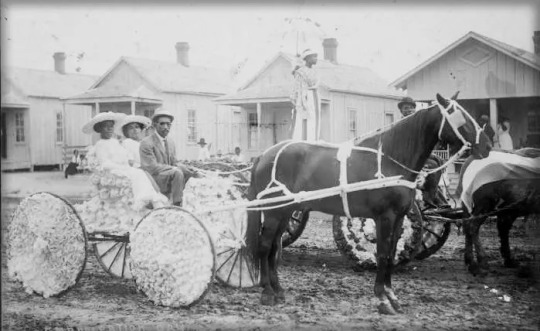

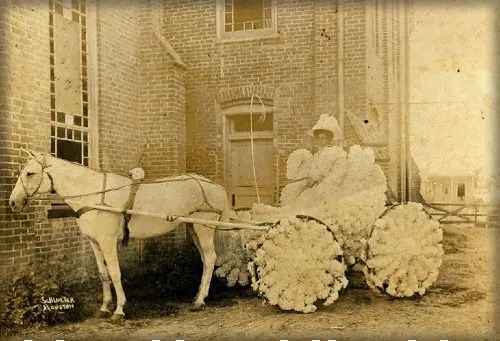
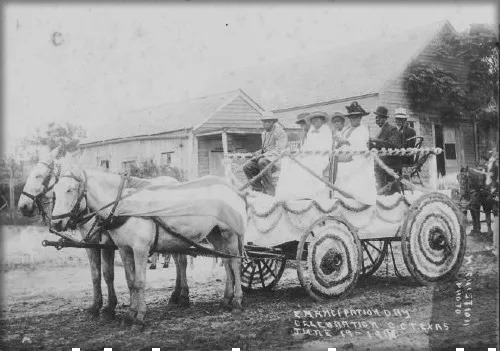
Carriages decorated in flowers celebrating “Juneteenth” (June 19, 1913)
Since 1865, June 19th has been the annual Day of Jubilee marking the end of slavery in America. While the official date was marked with the enactment of the Emancipation Proclamation on January 1, 1863, the news was not heard in Texas until June 19, 1865. Celebrations broke out spontaneously and the day became a yearly event.
#I live in Florida and went to a Black History meeting and learned about this and wanted to share#i never knew this#and thought it was beautiful…#juneteenth#june 19th#slavery#america#us history#american history#florals#educational#black history#sepia#black and white#photography#fuck texas#fuck white supremacy#day of jubilee#emancipation proclamation#1900s#early 1900s#photographs#vintage photos
21 notes
·
View notes
Text

Florida leads the nation in book bans.
It had more than double the bans of No. 2 Texas, according to a new report by national free speech group PEN America.
The report found 3,362 instances of books banned across the nation in the 2022-23 school year, up 33% from the previous one. Forty percent of those were courtesy of Florida school districts.
"Over two years, there's a pretty clear trend line of this getting worse, and this is becoming normalized," said Jonathan Friedman, PEN America's director of free expression and education programs. "I think the situation in Florida is really just escalating to a place that feels almost unimaginable to a year ago."
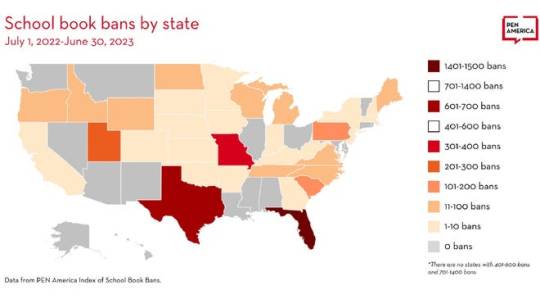
A year ago...
School districts across Florida have purged titles from their library shelves since DeSantis signed the Curriculum Transparency Act last year. It came as COVID-19 controversies brought more attention to what was happening in schools, especially from conservative activists and groups like Moms for Liberty.
As local chapters spring up across the state and nation, Moms for Liberty has become one of the leading voices trying to remove “inappropriate” books from schools.
DeSantis touted the law as a way to increase parental involvement in education and prevent "indoctrination." It requires districts to catalog every book they offer and put a formal review process in place for complaints
Then came House Bill 1069, which took effect July 1, further creating wildly-varyinginterpretations on what books should be removed from schools — and putting in question even more books. The law requires school districts to remove within five days any book challenged for including pornography or sexual conduct until the complaint is resolved.
Also coming into play over the last two years are state laws prohibiting instruction on sexual orientation or gender identity in school. School districts have removed books citing that law, though Florida Attorney General Ashley Moody recently said it doesn't apply to books.

A look at the books
The Florida Department of Education recently released a list that school districts removed 386 book removals from 1,218 total objections last year.
But those are just titles that school boards decided to remove after receiving objections. PEN America's report goes beyond that and says state school districts banned 1,406. That's up from 566 last year.
The group's definition of a school book ban: "Any action taken against a book based on its content and as a result of parent or community challenges, administrative decisions, or in response to direct or threatened action by lawmakers or other governmental officials, that leads to a previously accessible book being either completely removed from availability to students, or where access to a book is restricted or diminished."
The list included books that were removed following official objections as well as unofficial ones, such as from concerned emails. The biggest portion of listed banned books are ones school districts removed pending a review of its content.
More than three quarters of books banned across the nation were books meant for younger audiences, like young adult, middle grade and picture books.
Nearly half of banned books included instances of violence or physical abuse, according to the report. Books with topics on student health and wellbeing made up 42%, and a third depicted sexual experiences.
Books with characters of color and themes or race and racism made up 30%. So did titles with LGTBQ characters or themes.
"Hyperbolic and misleading rhetoric about 'porn in schools,' 'sexually explicit,' 'harmful,' and 'age inappropriate' materials led to the removal of thousands of books covering a range of topics and themes for young audiences," reads the report. "Overwhelmingly, book bans target books on race or racism or featuring characters of color, as well as books with LGBTQ+ characters."
Federal lawmakers bicker on book bans:U.S. Senate hearing takes on book bans; Democrats highlight DeSantis' Florida policies
How one group goes after school books:Rockin' and rollin' with book challenges: Internal emails show Moms for Liberty plans
Context on the culture wars
What books should be on school shelves has been not only a question but a pivotal battle in Florida — and national — culture wars.
It’s far from resolved. The two sides can't even agree on the term "book ban."
This was highlighted during a United States Senate Judiciary Committee hearing from earlier this month.
“To put it bluntly, books aren’t being banned,” said Max Eden, one of the Republicans' witnesses and a research fellow for the American Enterprise Institute.
Eden, who has done research disputing book ban claims, pointed to how removed books could still be purchased on Amazon. He said that most of the books claimed to be banned by national book access advocates are still in school libraries.
But, for books that are removed, he said communities have to draw a line somewhere. He went on to read an explicit passage from “All Boys Aren’t Blue,” a memoir and manifesto by George M. Johnson, who reflects on growing up Black and queer. It’s listed as one of the nation’s most banned books by PEN America.

DeSantis has taken a similar tack in responding to the controversy.
He’s maintained that the idea of book bans across Florida, which have made many headlines, is a "hoax." Conversely, though, he’s bashed books that have been recently restricted in public schools as pornographic, violent or otherwise inappropriate.
“Exposing the ‘book ban’ hoax is important because it reveals that some are attempting to use our schools for indoctrination,” DeSantis said in a statement. “In Florida, pornographic and inappropriate materials that have been snuck into our classrooms and libraries to sexualize our students violate our state education standards."
#Florida is the nation's book banning leader#according to national free speech group#florida#education#Black History#Black Florida History#Black Books Matter#book banning#florida is the book banning haven of white supremacy#desantistan#white hate
108 notes
·
View notes
Text
Newsweek: Ron DeSantis Accused of Being 'Pro-Slavery' Due to New Florida Curriculum
Florida Governor Ron DeSantis is facing new criticism over his state's new curriculum for African-American history in which some say is "pro-slavery."
DeSantis, a Republican who is running for president in 2024, has made his embrace of right-wing social causes a cornerstone of his style of politics. He has decried "woke" education, signing into law requirements about how race can be taught in Florida schools as educators across the United States grapple with conservative efforts to limit discussions of diversity, including African American history, in public schools.
Advocates for more restrictive lessons on race have argued all sides of a political or historical debate should be presented in schools. Critics, however, are accusing DeSantis and other Republicans of attempting to erase the history of slavery, and that students should learn about this topic in its entirety.

This standard has sparked criticism from educational and civil rights leaders, who have accused Florida Republicans of seeking to whitewash the history of slavery.
Representative Eric Swalwell, a California Democrat, accused DeSantis of being "pro-slavery" over the educational policy.
"Please keep this simple: If you require schools to teach the 'personal benefits' of slavery you are pro-slavery. Ron DeSantis is pro-slavery," the Democratic lawmaker tweeted on Saturday.
— Rep. Eric Swalwell (@RepSwalwell) July 22, 2023
DeSantis defended the standards when pressed by a reporter, saying that he "wasn't involved" in writing these standards, which were "not done politically."
"I think what they're doing, is I think that they're probably going to show some of the folks that eventually parlayed, you know, being a black smith, into doing things later in life," the Florida governor said. "But the reality is all of that is rooted in whatever is factual."
Newsweek reached out to DeSantis' office for comment via email.
Still, many others also condemned the new standards.
Will Hurd, a former congressman from Texas who is also running in the GOP 2024 presidential primary, tweeted on Friday, "Unfortunately, it has to be said – slavery wasn't a jobs program that taught beneficial skills. It was literally dehumanizing and subjugated people as property because they lacked any rights or freedoms."
Unfortunately, it has to be said – slavery wasn't a jobs program that taught beneficial skills. It was literally dehumanizing and subjugated people as property because they lacked any rights or freedoms.https://t.co/4JjIgeDhKX
— Will Hurd (@WillHurd) July 21, 2023
Jaime Harrison, the chair of the Democratic National Committee (DNC), slammed the policy as "disgusting."
"The much anticipated DeSantis reset: Teaching our kids that slavery had its benefits," he tweeted on Friday. "Disgusting."
Vice President Kamala Harris, during a speech at Delta Sigma Theta Sorority Inc.'s 56th national convention in Indianapolis on Thursday, described the standards as an attempt to "gaslight us."
"Just yesterday, in the state of Florida, they decided middle school students will be taught that enslaved people benefitted from slavery," she said. "They insult us in an attempt to gaslight us and we will not stand for it. We who share a collective experience in knowing we must honor history in our duty in the context of legacy. There is so much at stake in this moment."
#Ron DeSantis Accused of Being 'Pro-Slavery' Due to New Florida Curriculum#florida#desantis lies#gop#white supremacy#systemic racism#revisionist history of america#all lies#american history#Black Lives Matter#Black History Matters
114 notes
·
View notes
Text




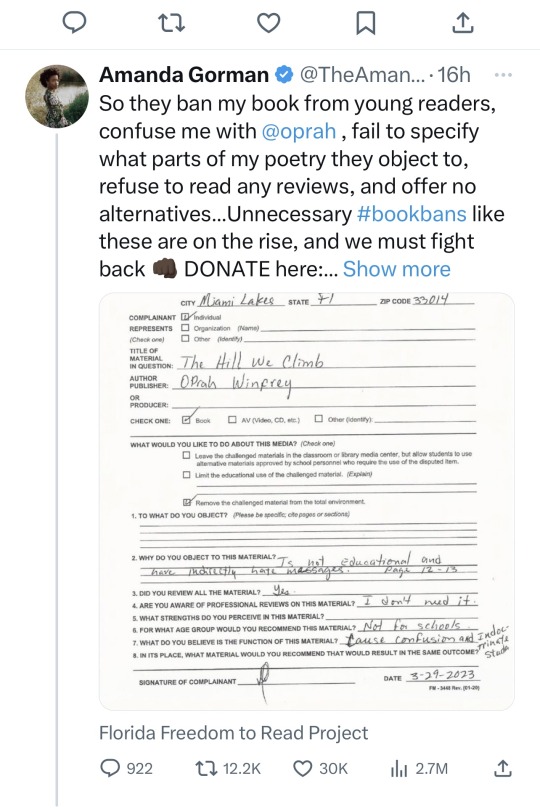

At this point, Florida Republicans and fragile white Republican voters are just flat out targeting any books written by Black authors who refuse to sing “Zip-a-Dee-Doo-Dah” and whitewash away the past.
This is racist erasure.
Here is the IG link to Amanda Gorman’s donations page.
#amanda gorman#the hill we climb#politics#florida#republicans#book bans#whitewashing history#black history#erasure#ron desantis#racism
222 notes
·
View notes
Text
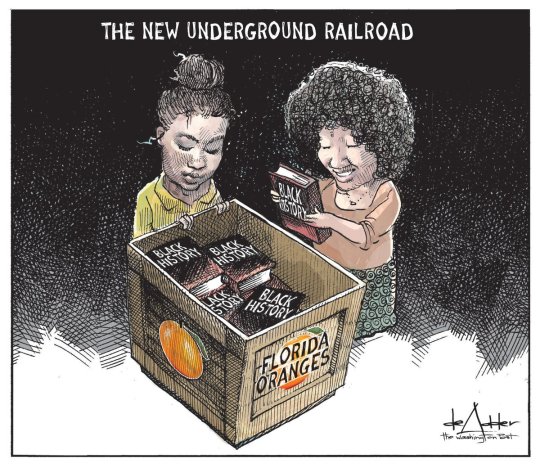
113 notes
·
View notes
